Translation
Who is the “smartest intelligent cockpit” for Wei Xiaoli?
Written by Xiong Ruifeng
The successive release of various intelligent interactions and intelligent services in the car has made the intelligent cockpit the “third living space” after the traditional home and office scenes. However, the existing car companies have different definitions and standards for the intelligent cockpit, and the configuration data is too complicated. Therefore, our goal is to simplify the complexity and introduce the “Digital Intelligence + ICBT-100 Intelligent Cockpit Evaluation Standard”.
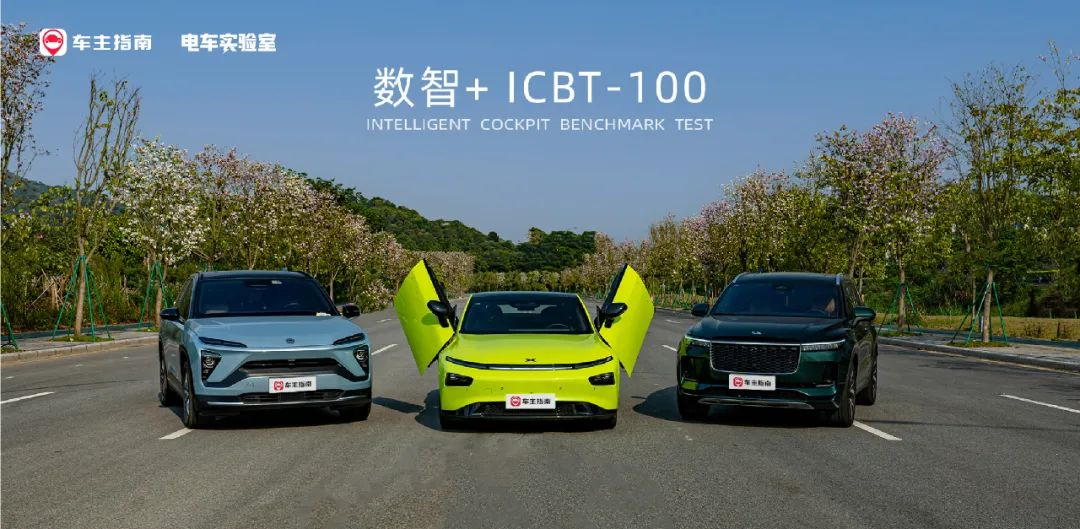
As the first program of the Intelligent Cockpit Testing Center, we have invited three “superstar” cars, NIO ES6, XPeng P7, and Li Xiang ONE, to see if the legendary “Wei Xiaoli” intelligent cockpit can surprise us.
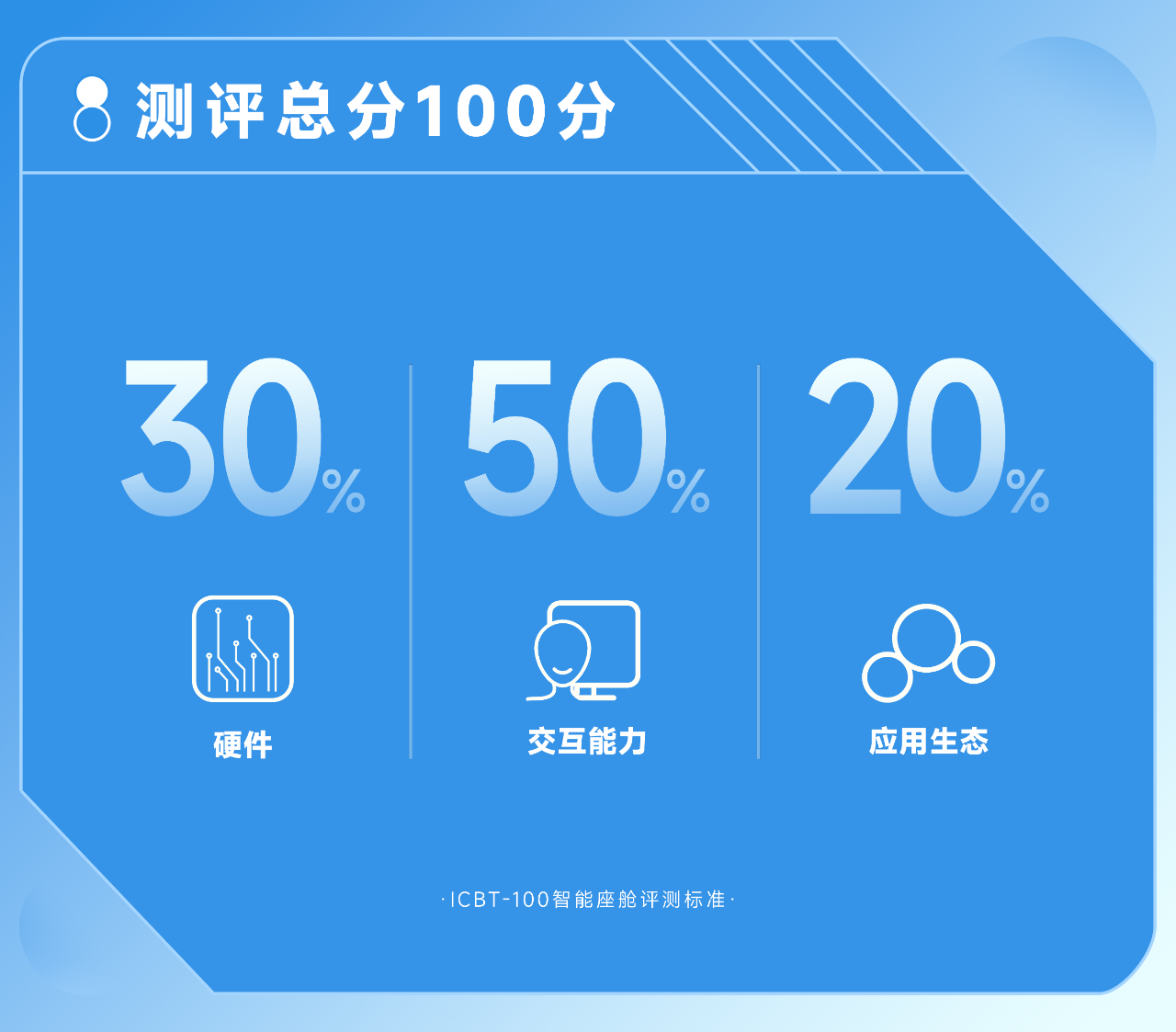
In this “Digital Intelligence + ICBT-100 Intelligent Cockpit Evaluation Standard,” the key focus is on three major categories: intelligent hardware, interaction capabilities, and application ecology. At the same time, each category is divided into data and experience dimensions and further subdivided into more than 30 items for scoring. Let’s take a look at how our daily use of intelligent car systems performs.
Introduction of the Contestants
We have chosen the popular “Wei Xiaoli” in China for the car models. As NIO’s current models maintain consistent hardware specifications and software versions, we have selected the NIO ES6 as the representative.
While originally we planned to send the flagship XPeng G9, as the actual vehicle has not yet been delivered, we chose our old friend- the “sub-flagship” XPeng P7; as for Li Xiang, similar to XPeng, as its flagship L9 is not yet on the market, there is only ONE as the only choice.
Car Hardware
In the intelligent hardware category, we focus on the screen, basic hardware, and expansion interfaces for detailed scoring.
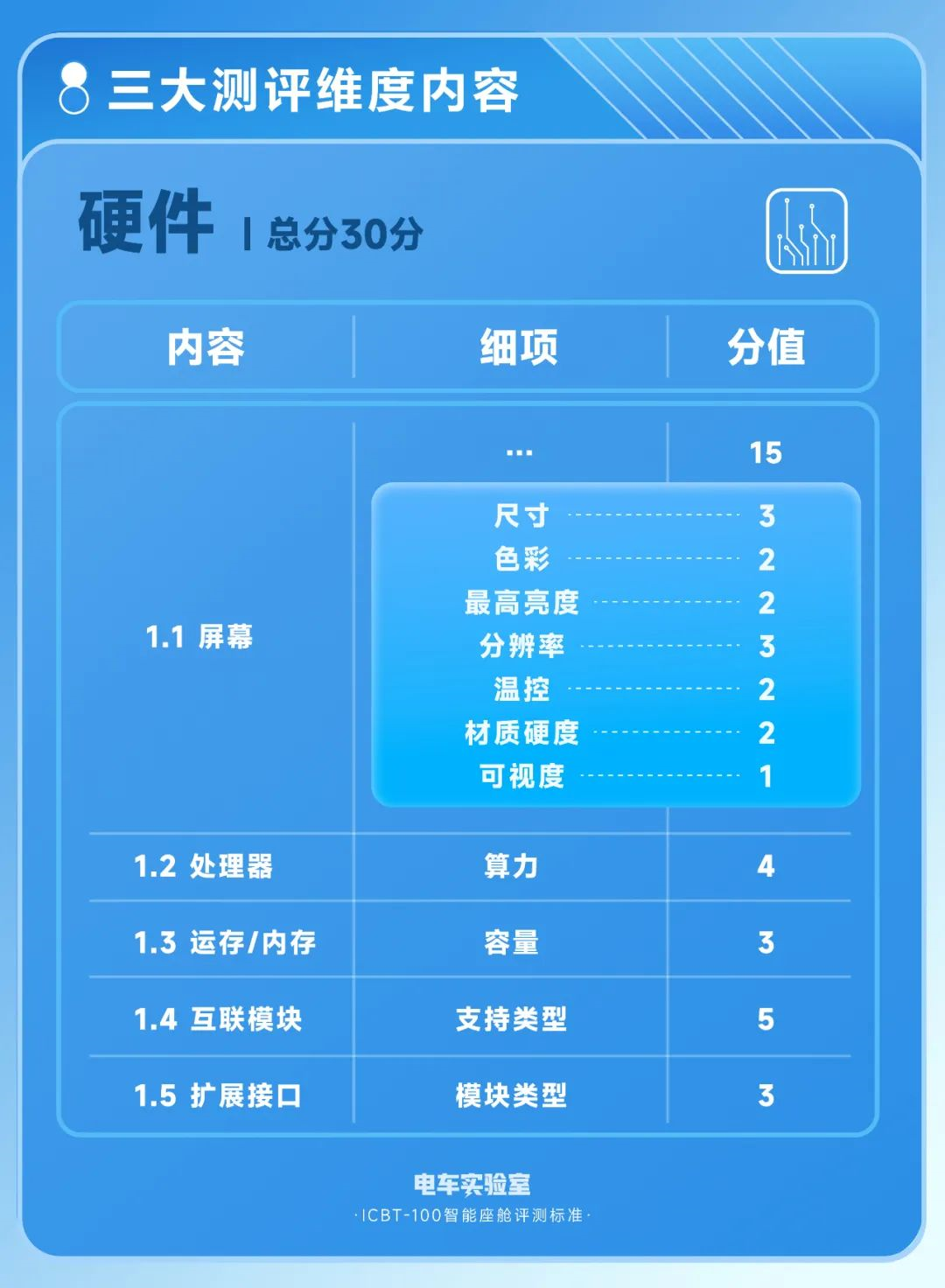
NIO ES6
As NIO’s second car model, the ES6 can be regarded as a current flagship product. Its younger and more mature positioning even allows it to decide the development direction of the entire brand. Therefore, the refinement of product details and strengths has been pursued in the ES6.
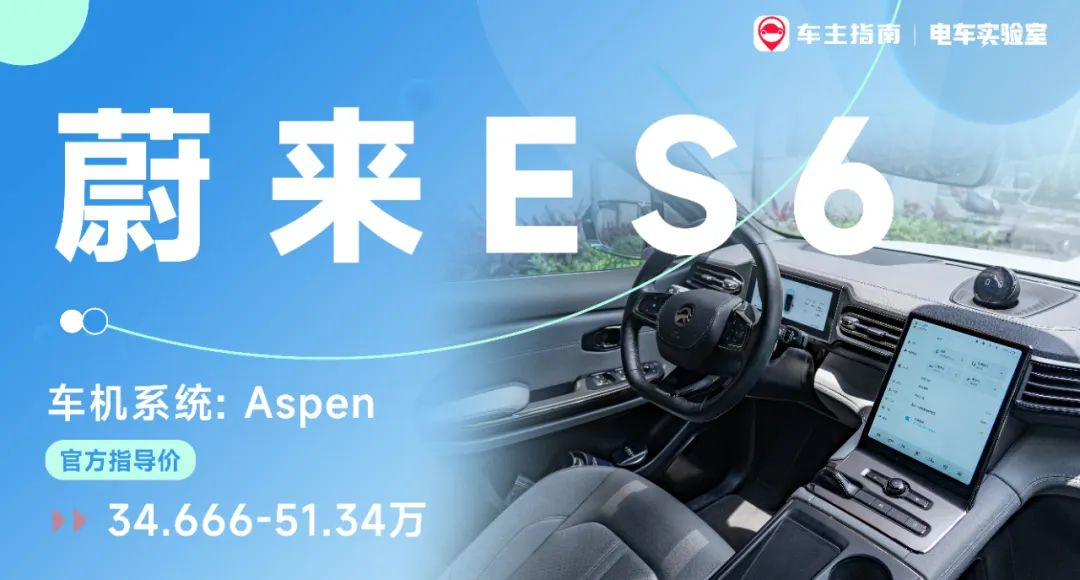 In terms of intelligent cockpit performance, the ES6 is the only one of the three cars that adopts a vertical layout for the center screen. The unified family of 9.8-inch full LCD instrument panel and 11.3-inch central screen combination, combined with touch screen and basic physical keys, together with the Aspen system, provide a very comfortable experience for the entire car.
In terms of intelligent cockpit performance, the ES6 is the only one of the three cars that adopts a vertical layout for the center screen. The unified family of 9.8-inch full LCD instrument panel and 11.3-inch central screen combination, combined with touch screen and basic physical keys, together with the Aspen system, provide a very comfortable experience for the entire car.
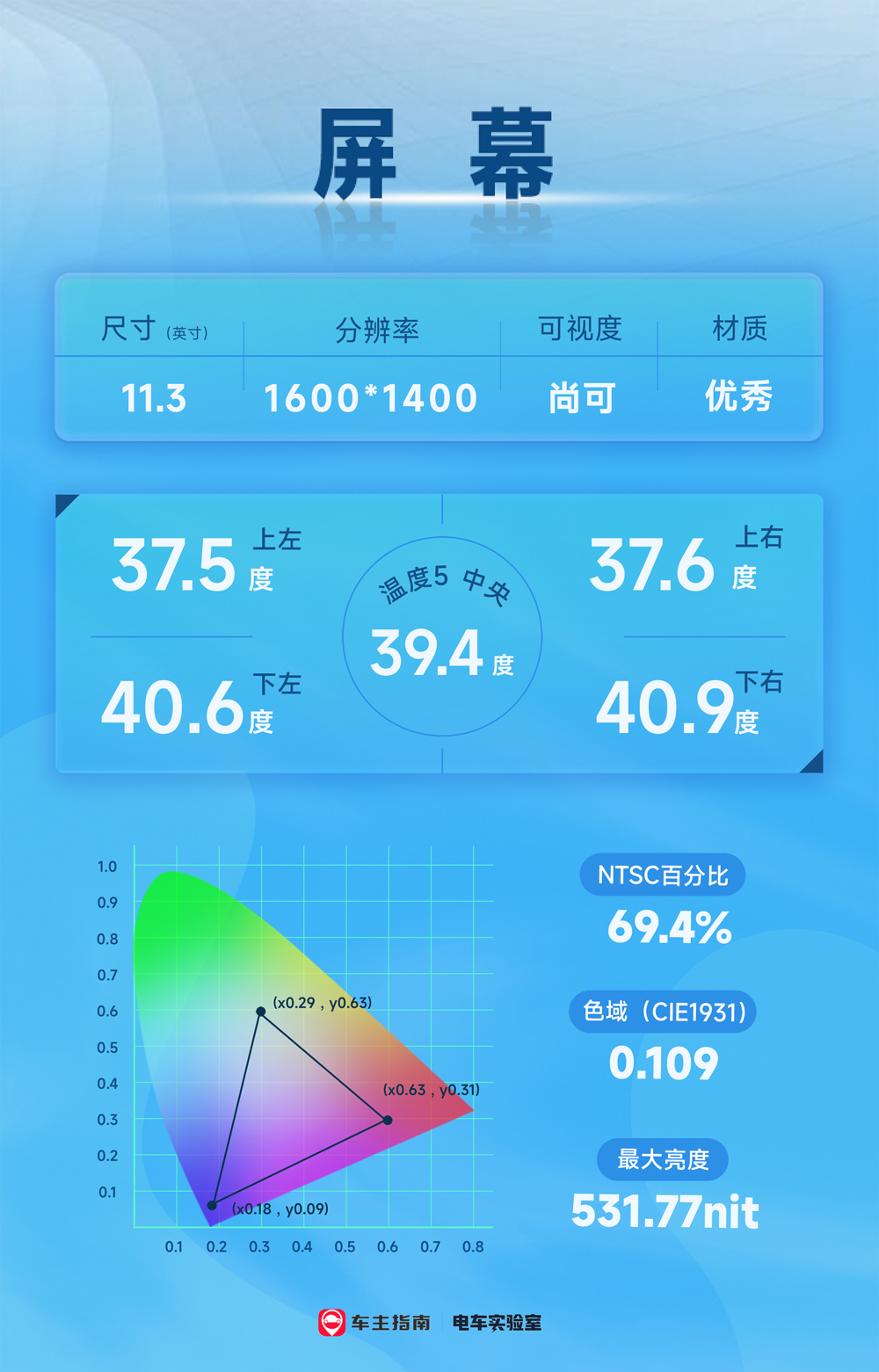
In terms of specific parameters, while the NIO ES6 center screen resolution reaches 1600*1400 (the highest among the three cars) / maximum brightness is 531.77nit (ranked second), perhaps due to material process limitations at the earliest release time, the actual color performance is not satisfactory, with only 69.4% in terms of NTSC color gamut, while the color gamut of general notebook displays is around 72%.
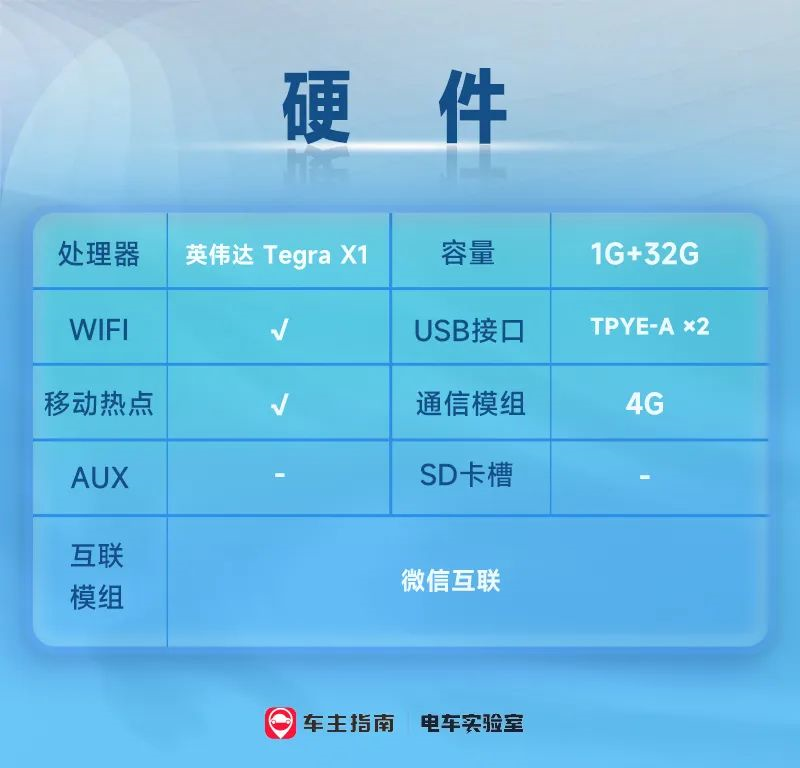
In terms of basic hardware specifications, due to its release time, the NIO ES6 is only equipped with an Nvidia X1 chip (20nm process technology) released in 2015, and the matching running memory (RAM) only has 1G + storage space (ROM) 32G.
The basic hardware of the NIO ES6 may also be a major challenge for subsequent OTA upgrades, but fortunately, according to internal information, NIO is planning to launch a hardware upgrade service to replace and upgrade the existing chips of the ES8 and ES6.
XPeng P7
As the most grounded car company among the three, XPeng’s intelligent cockpit is also very user-friendly. Since the release of the new Xmart OS system, the open and highly customizable user experience has always been highly praised by XPeng’s car owners, and this time, the P7 represents one of the highlights.
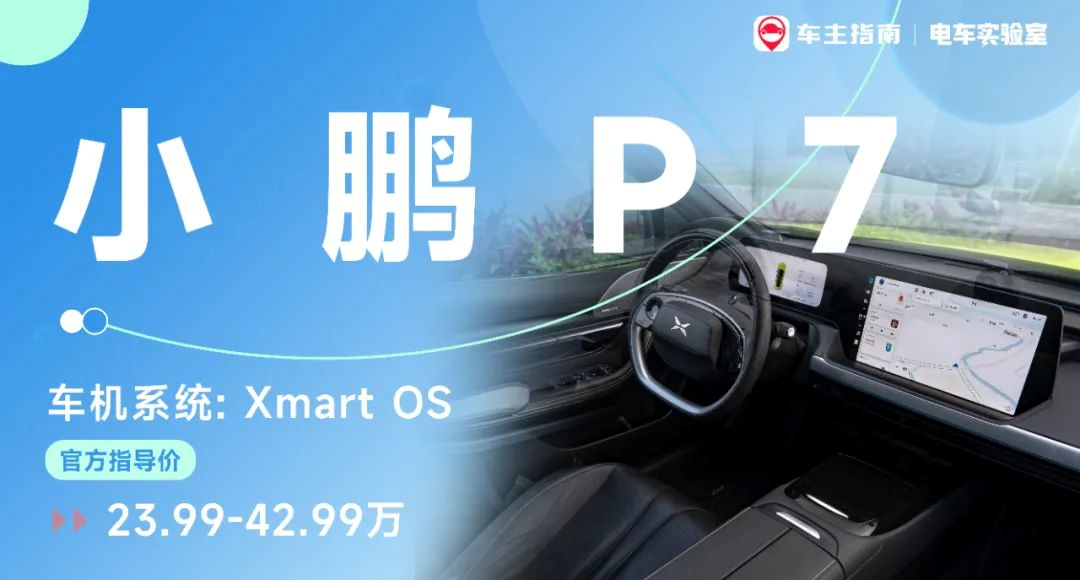
The XPeng P7 adopts the mainstream dual-screen design, with a center console size of 14.96 inches and a resolution of 2400*1200. The actual screen PPI reaches 179.
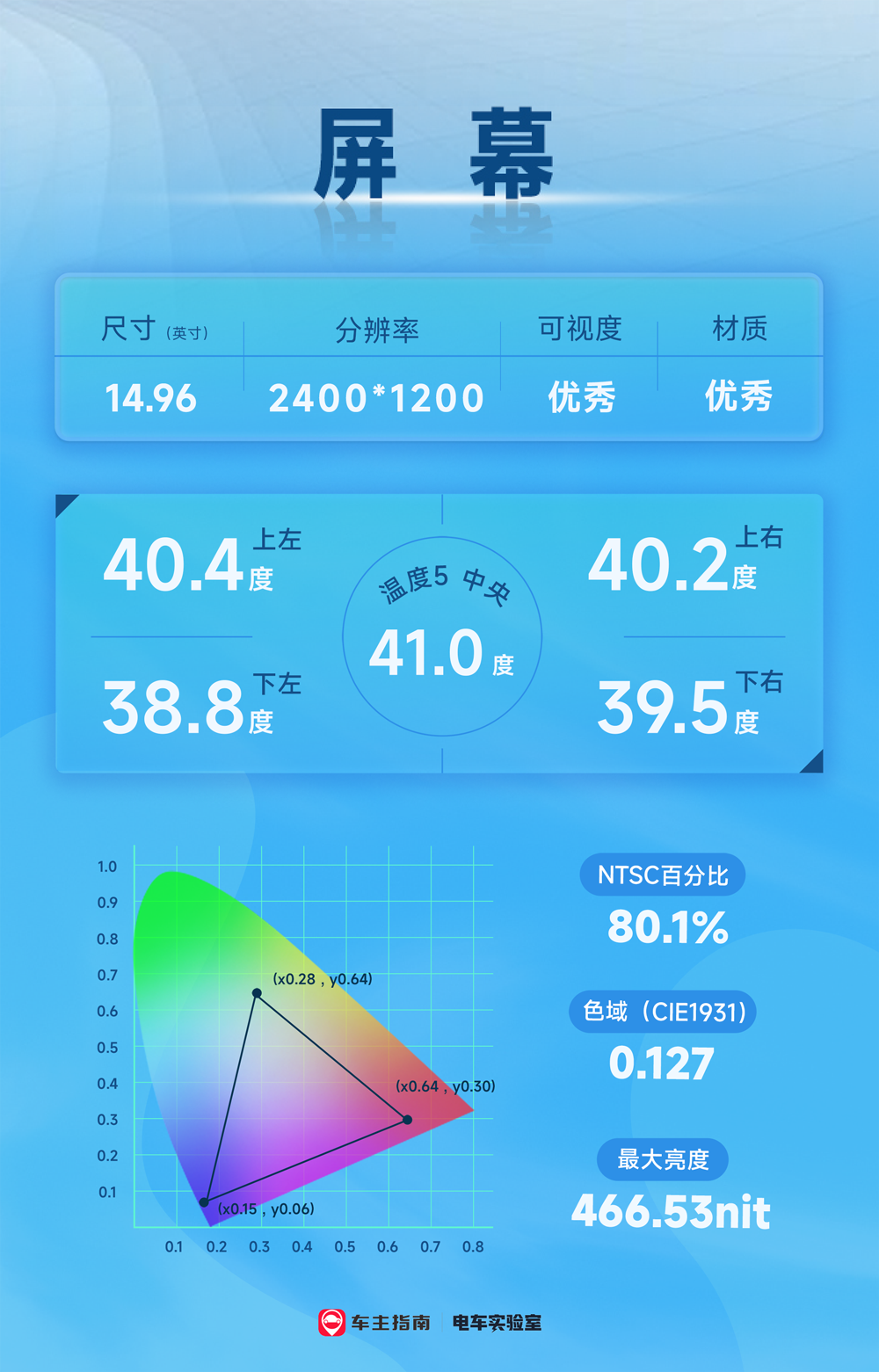
In terms of actual viewing experience, thanks to the reasonable angle design, the P7 has the best viewing angle performance among the three cars. Moreover, the screen’s anti-fingerprint coating is smooth enough to provide excellent fingerprint control.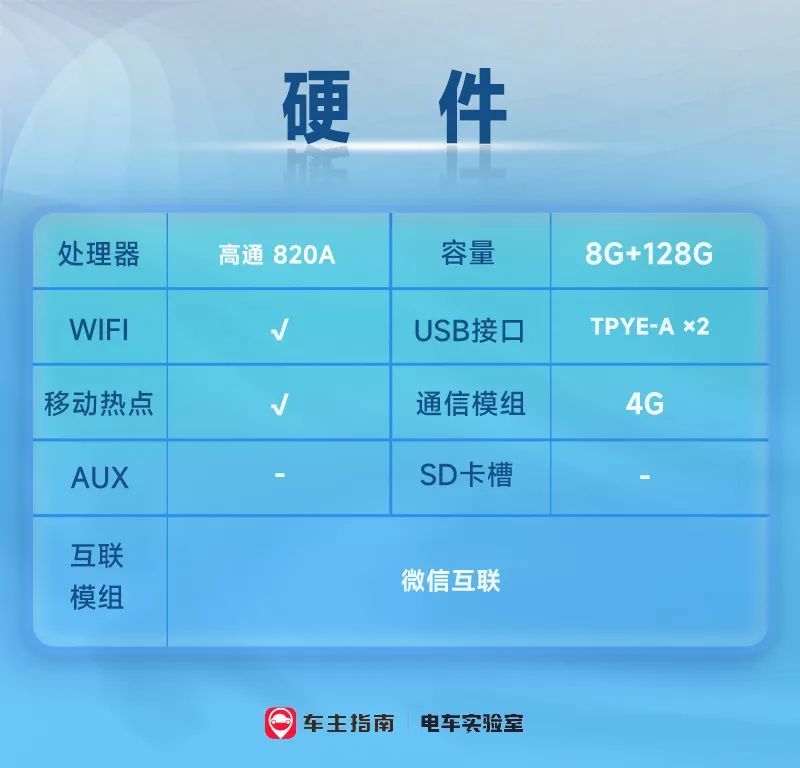
In terms of basic hardware parameters, XPeng is definitely the “elder brother” among the three cars. Not only does the processor use the currently mainstream Qualcomm Snapdragon 820A chip (released in 2018 / quad-core design) for intelligent cabins, but it also uses an LPDDR4 8G (running memory) + UFS2.0 128G (storage space) memory combination. Although this configuration is not new for smartphones, it is already a very high level for car machines.
Ideal ONE
After the Ideal ONE was released, it once again subverted the commercial image that mid-to-large SUVs should have, and its stylish and sporty design appeared more youthful and visually striking.
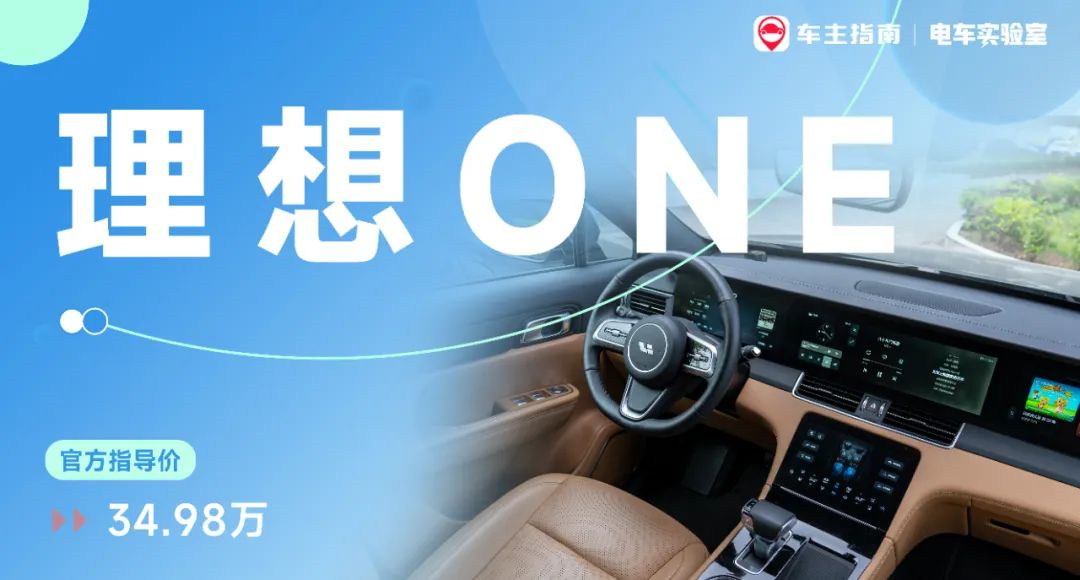
In terms of intelligent cabins, the Ideal ONE also performs well. It has the most four screens among the three models, and nearly all functions are completed through screen interaction. The Ideal ONE focuses on four-screen interaction + full-vehicle voice interaction for cabin understanding, and it completes the required functions through screens and voice.
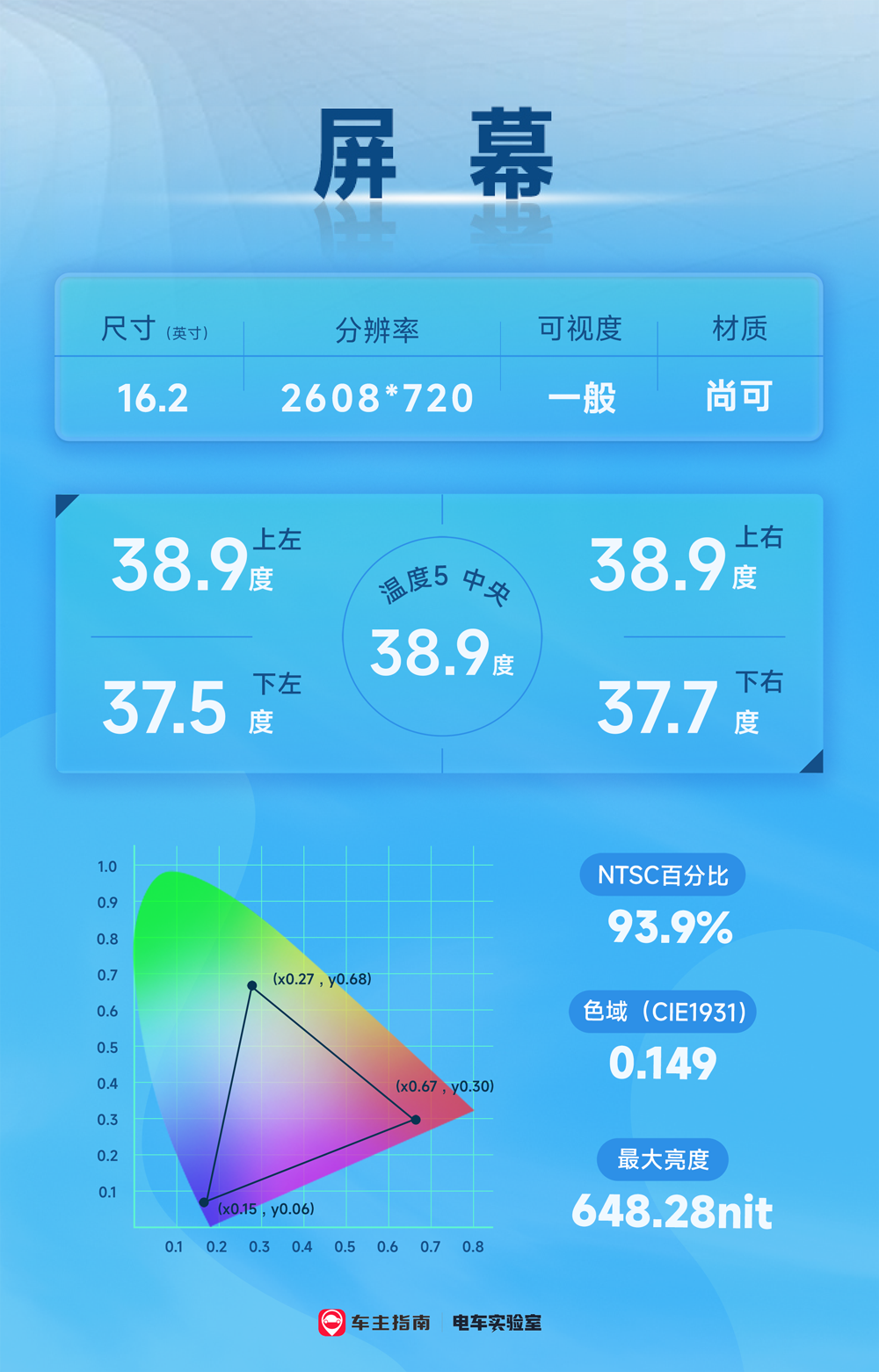
In actual experience, the Ideal ONE’s central control screen adopts a unique ratio of flattened horizontal screen. Although the size of 16.2 inches is the largest in the market, the resolution is only 2608×720 (with narrow edges as the standard, which is 720P), so the sawtooth is more obvious in daily viewing. However, in terms of color performance, the Ideal ONE is completely dominant, whether it is the 93.9% NTSC color gamut value or the maximum brightness of 648.28nit, which completely crushes two opponents. At the same time, the Ideal ONE is also superior to its opponents in screen temperature control. Under the condition of the highest brightness + full operation for 30 minutes, the average temperature of the screen is also controlled at around 38.38 degrees.
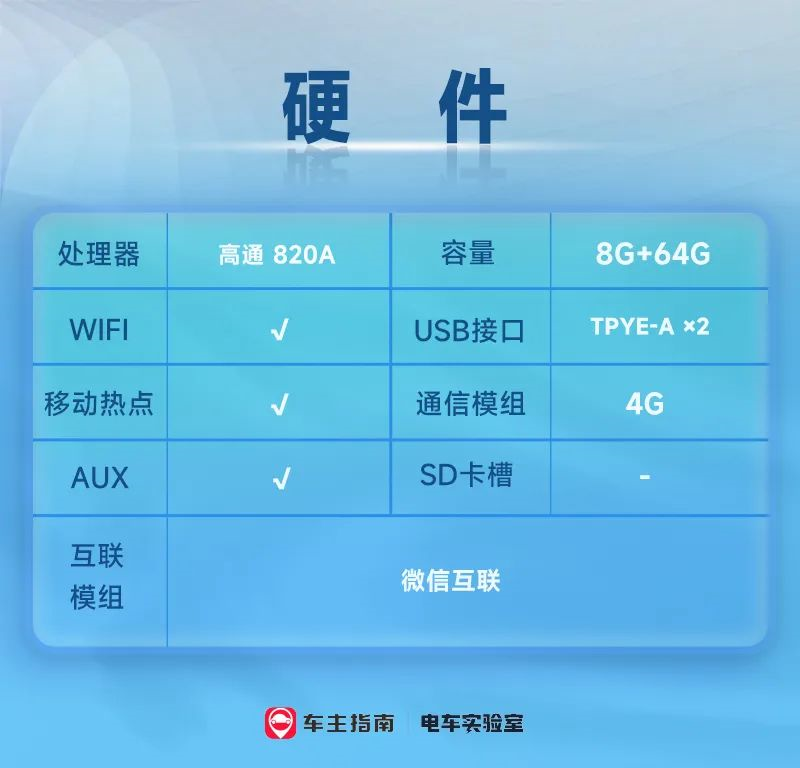
As for basic hardware parameters, the processor of the Ideal ONE is no worse than that of XPeng P7, and it also uses the Qualcomm Snapdragon 820A chip. The running memory is also 8G, but the storage space is slightly reduced, only 64G.
Summary of Car Hardware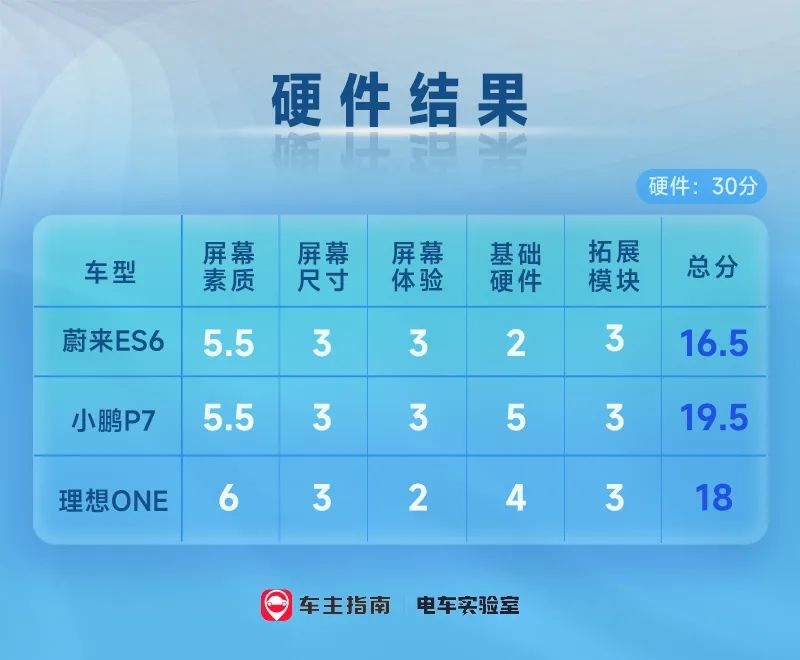
The table shows the scores of each car’s hardware in the intelligent cockpit. From the data, we can see that XPeng P7 is clearly leading the pack, while the Ideal ONE, although not as good as the P7 in overall quality, is catching up with it in terms of screen color and brightness, and has also taken into account the needs of contemporary consumers in terms of interface expansion.
Interaction Ability
In the IT industry, there is a saying: “No matter how good the hardware is, without system optimization, it is useless.” This reflects the importance of the system. At the same time, the interaction interface is not only the most direct contact between the car owner and the intelligent cockpit, but also excellent logic can directly improve the user experience of the entire cabin. Therefore, in this intelligent cockpit test, the interaction ability of the intelligent cockpit occupies a large part, and in this column, we have divided it into three dimensions: system, voice, and others.
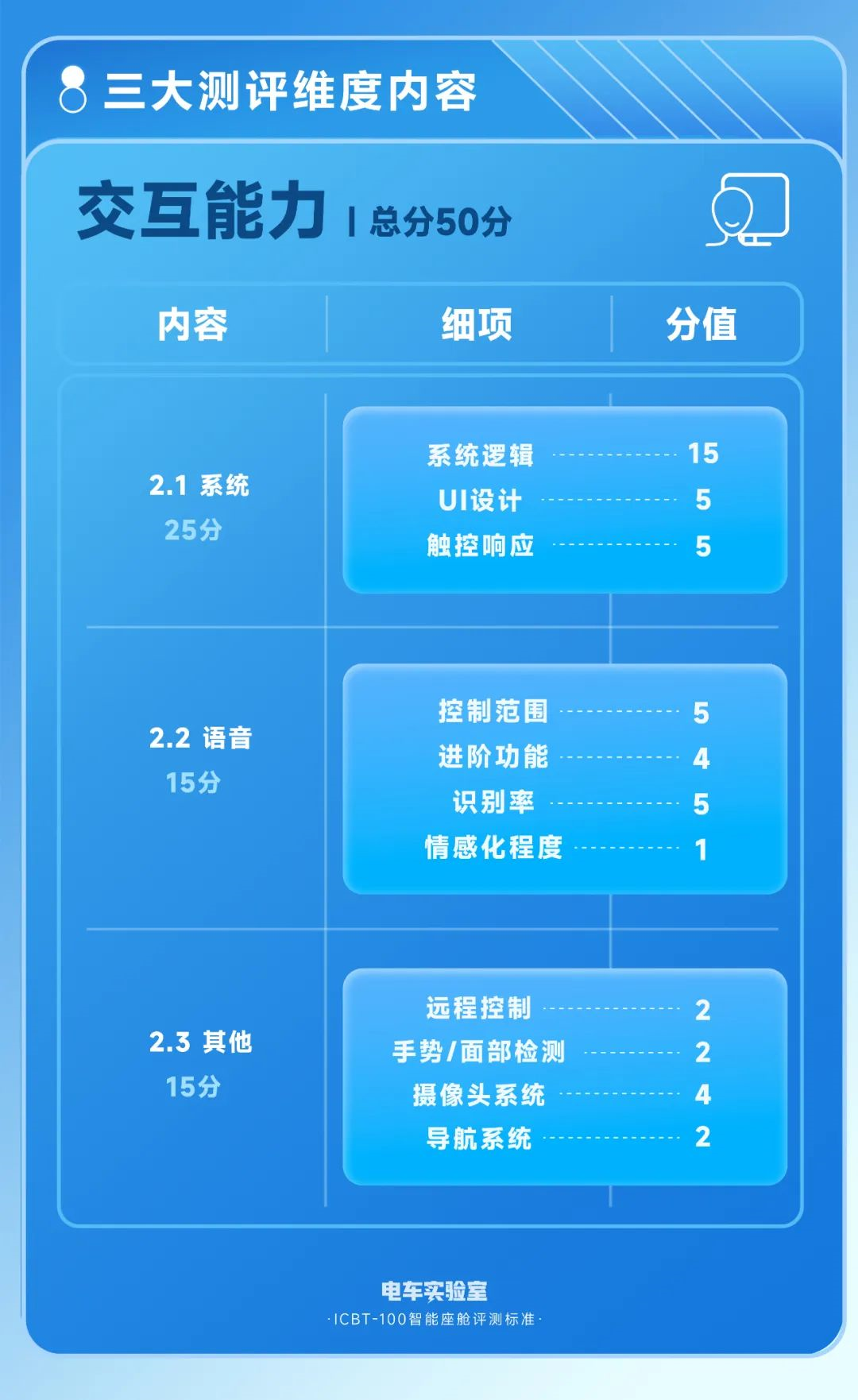
Special Note: In order to directly display the system logic, we have set up a logic challenge competition, which is to let first-time users follow the process to open each function in turn within the specified time: match the phone Bluetooth → open Bluetooth music (start playing) → dial 10086 (connected) → adjust the screen brightness of the intelligent cockpit (adjust to the brightest) → set the navigation destination, and see who uses the shortest time in the end.
NIO ES6
Thanks to the upgraded Aspen OS 3.0, the entire UI of the NIO ES6 is fully updated, and the main page is based on map information, with multimedia and vehicle information function cards retained below, and all icons use minimalist flat style, which will make people feel very “fresh and clean” visually.
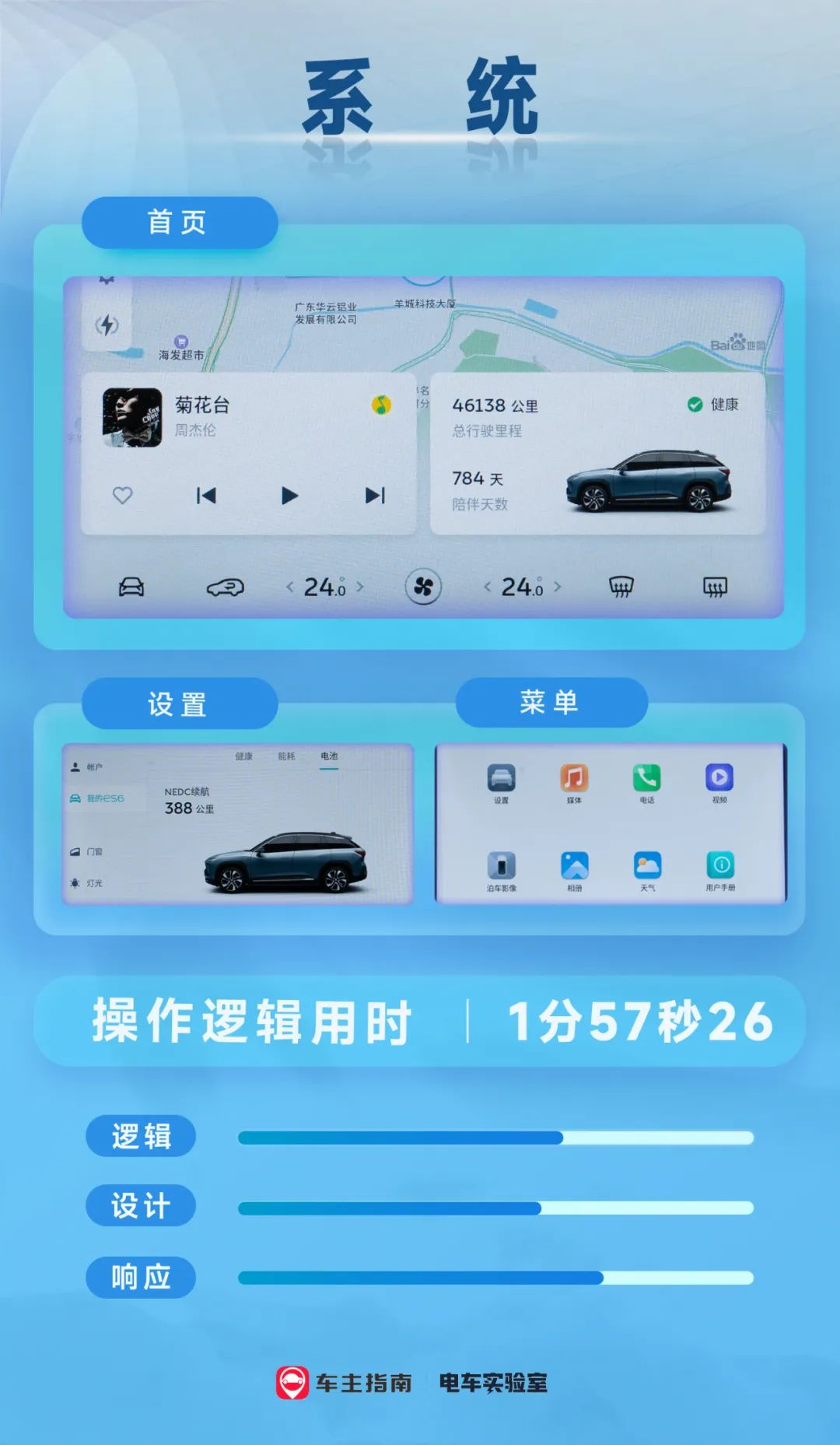
The NIO ES6 has relatively more system hierarchy among the three cars, so there is a learning curve for first-time users in terms of system logic. However, the menu interface is mainly “icon display”, and the display effect is very intuitive, clear and easy to read, and can support a variety of gestures.
It is worth mentioning that the NIO ES6 is also the only car model among the three cars that retains physical buttons, including the home button, menu button, vehicle driving mode button, and volume knob. However, constantly switching between the touch screen and physical Home/MENU buttons is a bit uncomfortable, but retaining the volume knob is absolutely deserving of praise.
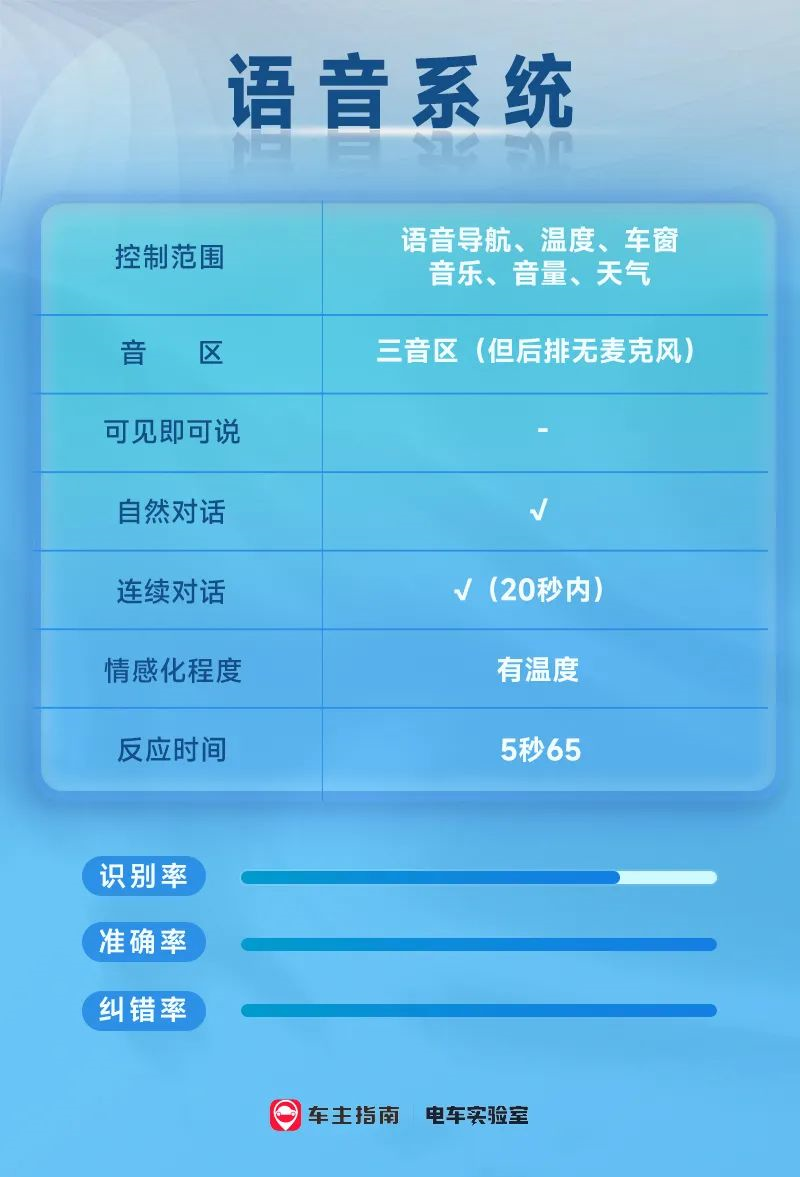 In terms of the performance of voice recognition system, all three competitors demonstrated strong capabilities, and ES6 is the only model among them that supports custom wake-up words. In actual use, it performed well in basic tasks such as daily weather, music, navigation, controlling windows and air conditioning, and supports recognition and continuous conversation in three sound zones (driver, front passenger, and rear seat). However, it can be clearly felt that its recognition speed is slightly slower than the other two competitors by about 1 second, and the recognition rate of the rear sound zone is not high (front is good), and it does not support the popular “visible speech” function.
In terms of the performance of voice recognition system, all three competitors demonstrated strong capabilities, and ES6 is the only model among them that supports custom wake-up words. In actual use, it performed well in basic tasks such as daily weather, music, navigation, controlling windows and air conditioning, and supports recognition and continuous conversation in three sound zones (driver, front passenger, and rear seat). However, it can be clearly felt that its recognition speed is slightly slower than the other two competitors by about 1 second, and the recognition rate of the rear sound zone is not high (front is good), and it does not support the popular “visible speech” function.
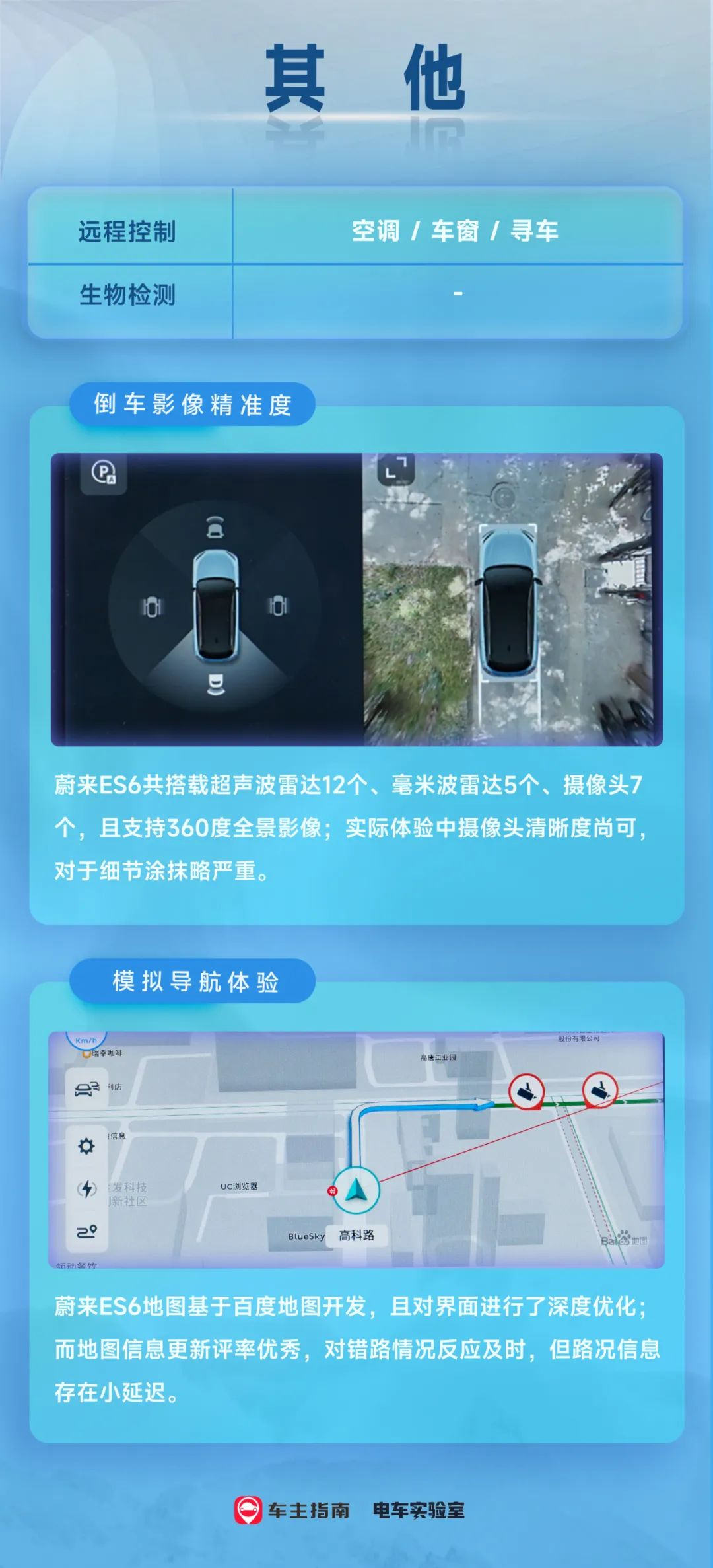
In other aspects, NIO ES6’s remote control function only supports conventional air conditioning, unlocking and other functions without too much creativity.
XPeng P7
XPeng P7 tends to be more functional in UI design style. Like NIO, the main page is centered around maps, and the left floating card-style layout supports map search, multimedia music, Bluetooth calls, etc., and the arrangement order will be determined intelligently by AI. At the same time, various icons at the top of the interface can be directly touched to open.
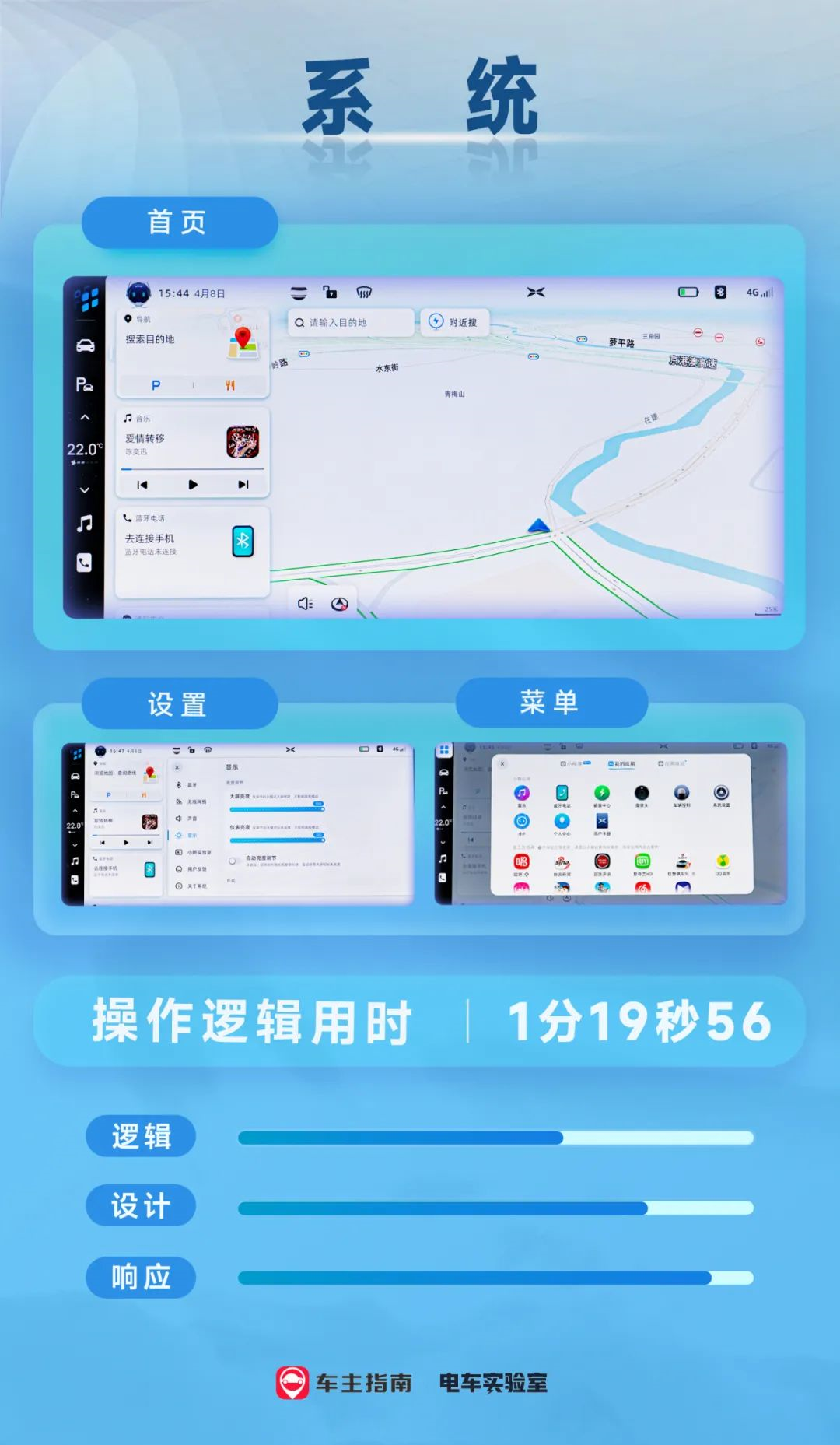
In addition, there are fixed functional options on the far left, including application menu, vehicle settings, automatic parking, air conditioning temperature adjustment, music, and phone, the 6 most commonly used functions. Thanks to its convenient card layout and fixed options, XPeng P7 greatly reduces the difficulty of getting started. In actual use, its logic operation time is the shortest, and almost no learning cost is required.
However, the downside is that XPeng P7 has different layouts for different functions, some are “display type” and some are “right expansion type”. At the same time, the appearance of “vehicle settings” and “system settings” on the application menu at the same time can be a bit confusing.
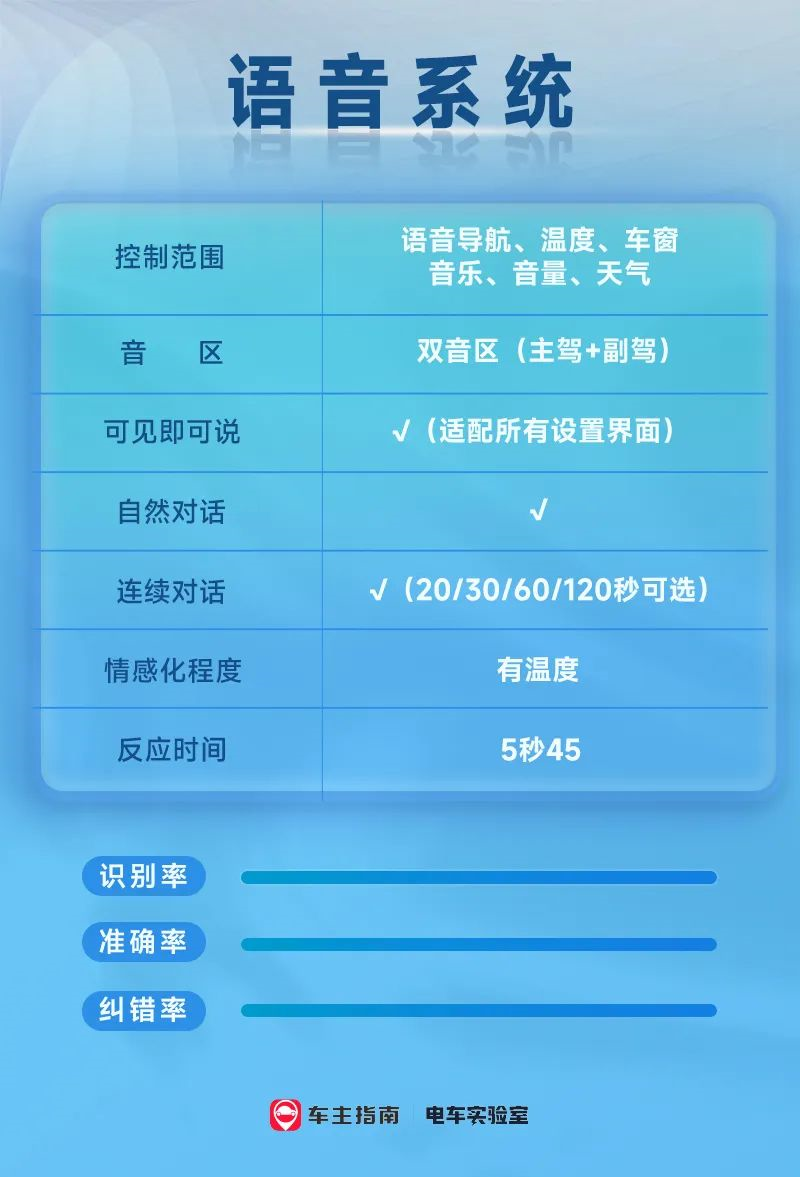
In terms of the voice recognition system, XPeng P7 uses a solution from iFLYTEK. It supports most conventional functions such as adjusting temperature and setting navigation perfectly. For the ability of recognition rate and error correction, P7 also has good performance. However, what’s more valuable is that P7 is also the only model among the three competitors that can handle up to 3 voice commands simultaneously (ES6 and ONE do not support simultaneous operation).
XPeng P7’s “visible speech” function covers almost all vehicle settings and system settings in the car, but the number of third-party APPs supported is still limited.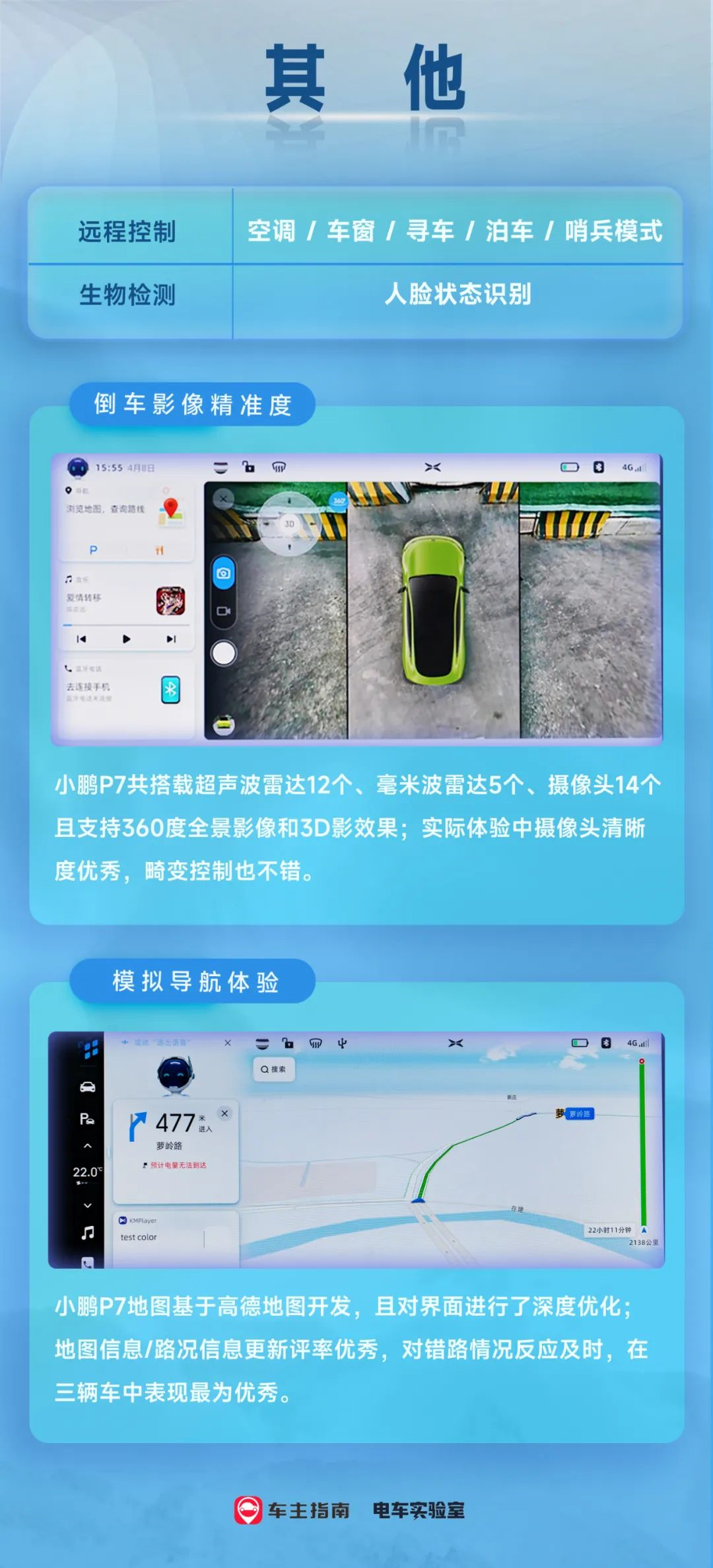
LI ONE
LI ONE’s UI interface is completely different from NIO and XPeng, if NIO XPeng is a humanities student, then LI must be created by a science student. At first glance, it looks very concise and directly tiles various functions on the desktop in the form of cards. Also, thanks to its wide screen design, it can display enough cards, making it visually intuitive.
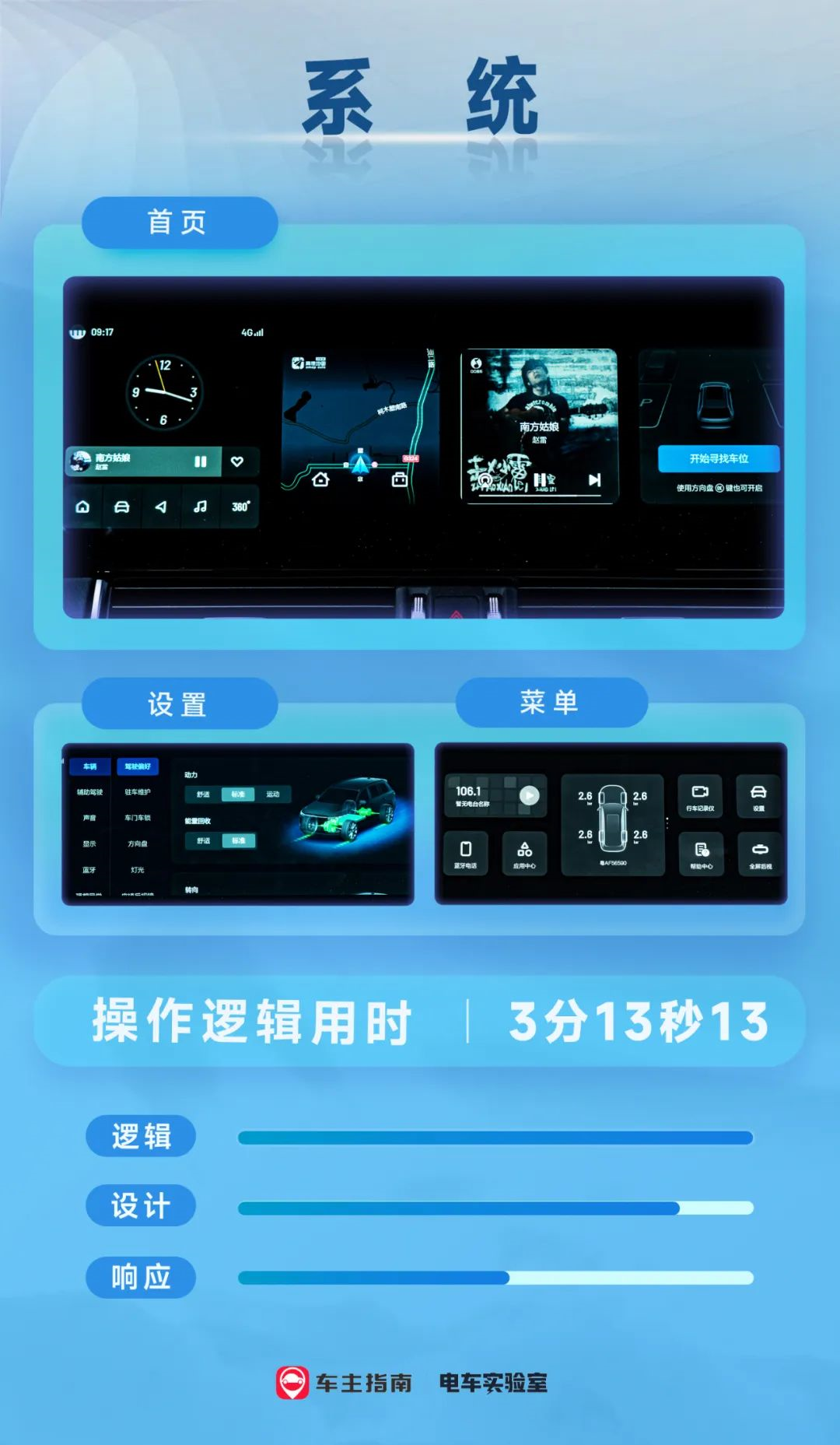
In terms of system logic and hierarchy, LI ONE is relatively clearer than its competitors, using a simpler “rightward expansion behavior” logical design, which greatly reduces the number of times users click on the screen and is particularly helpful in improving driving safety.
At first sight, you may think that LI ONE’s logical challenge time will be the shortest, but in reality, it is not. Although the system logic setting is the best among the three cars, the response time of certain APPs and system settings (Bluetooth, etc.) is longer, which instead places it at the bottom of the challenge time among the three cars.
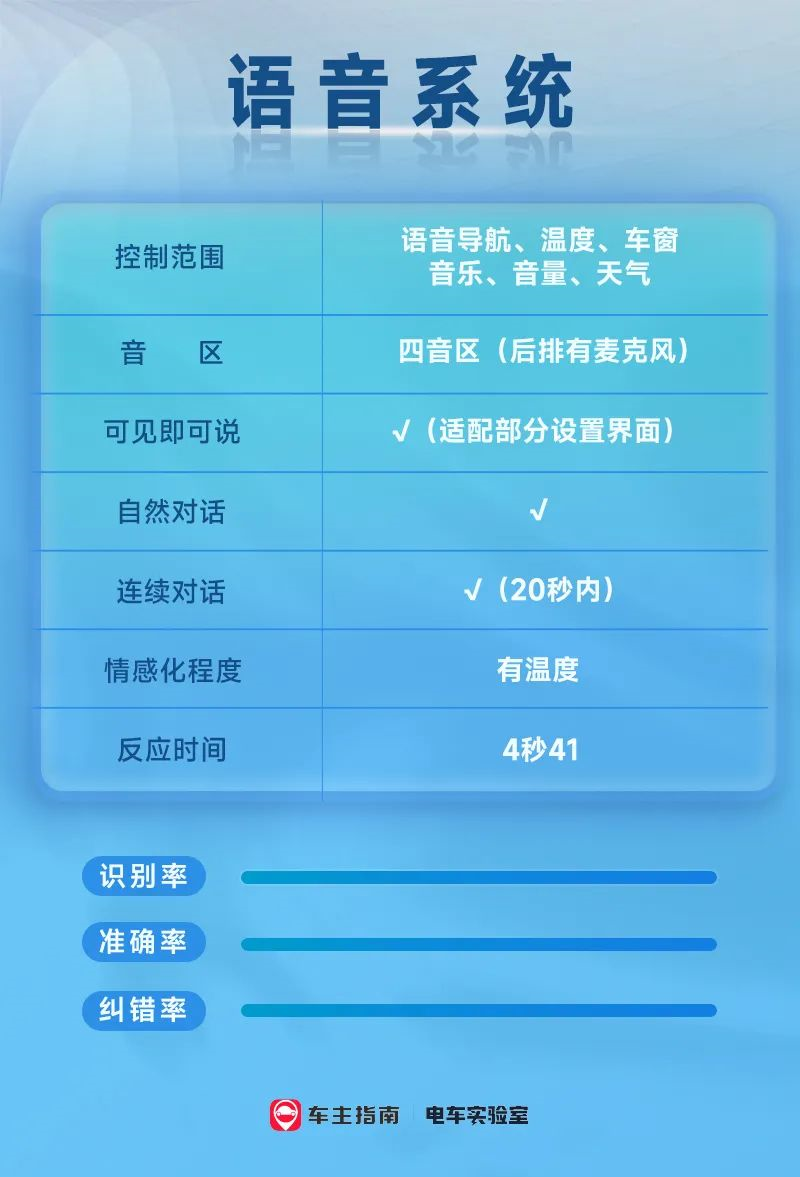
Regarding the voice system, besides the basic, stable functions, LI ONE is also the only model among the three cars that supports recognition of four audio zones, including driver, co-driver, and left and right rear passengers. Thanks to the collection microphones in the rear, which only LI ONE has (both XPeng and NIO only have them in the front), even the recognition performance in the third row of LI ONE is also very good.
In terms of LI ONE’s “visible and speakable” function, it has already adapted to most setting interfaces (but not as comprehensive as XPeng), and can control the co-driver’s entertainment screen for video watching. It also has third-party support for a few apps, such as QQ Music and Himalaya.
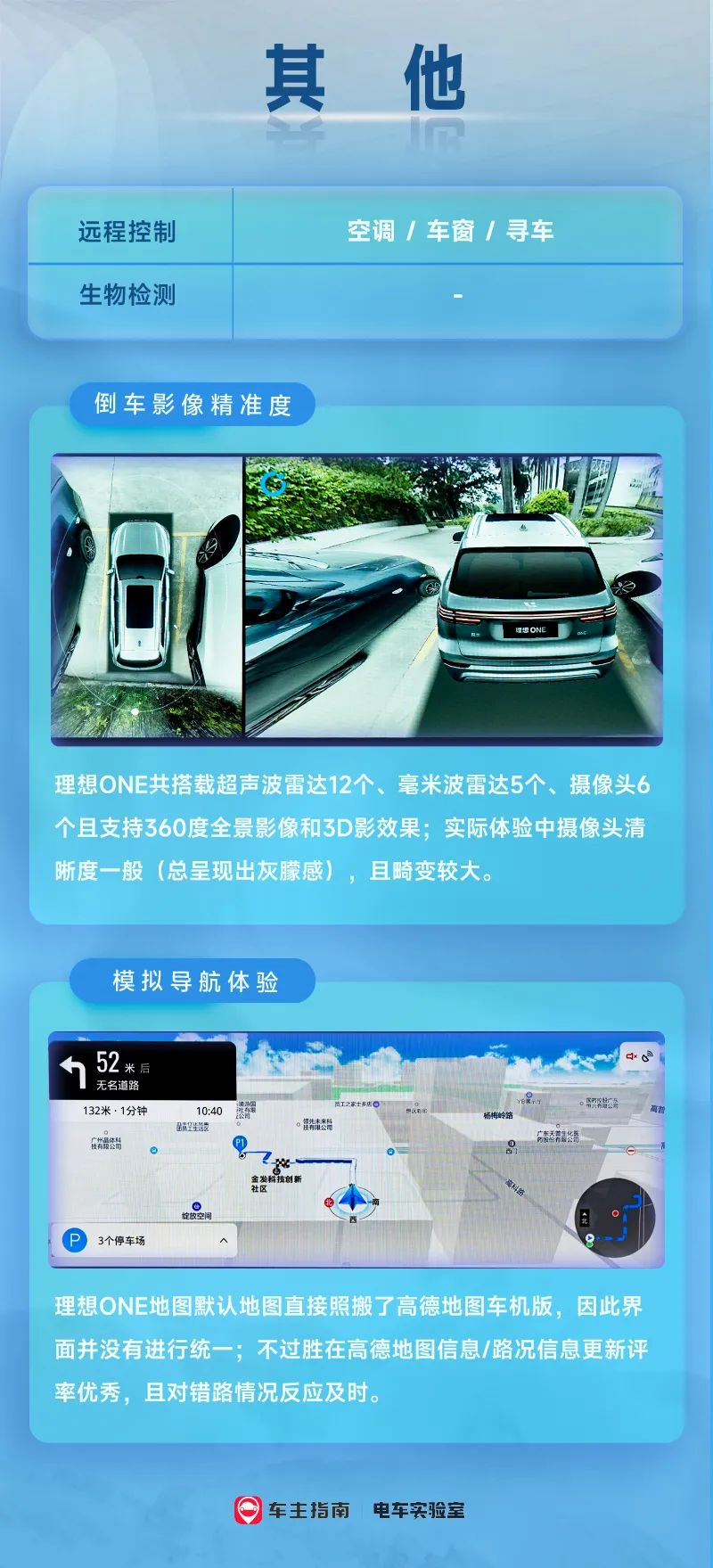
Summary of Interaction
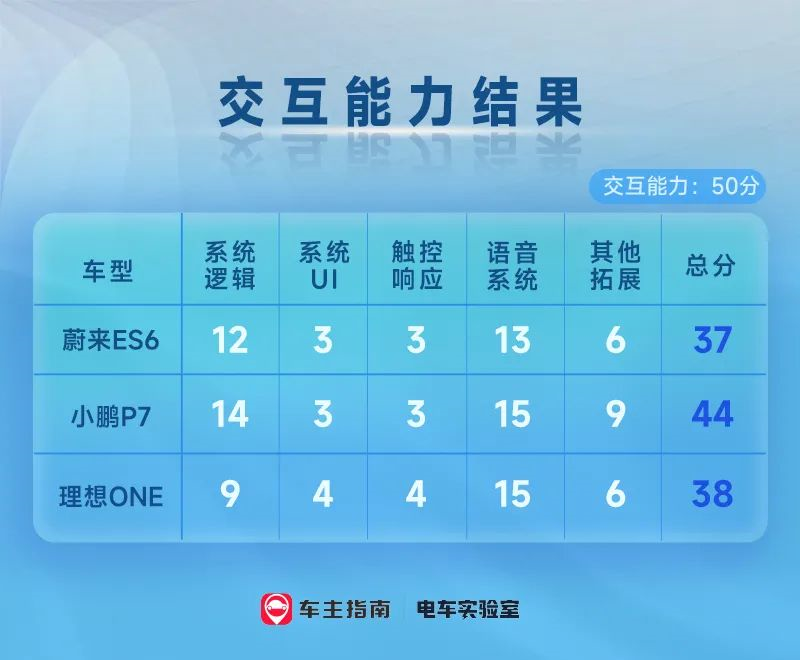
This table shows the scores of each car in the interaction section. Through the data, we can see that the overall ranking is roughly the same as the hardware. XPeng P7 is far ahead in scores, followed by LI ONE and NIO ES6. Among them, LI and XPeng present two styles in UI performance, both of which have excellent results.
Application EcologyBy looking at the essence beyond the phenomenon, we can see that achieving a truly intelligent cockpit requires more than just relying on the in-car infotainment system itself. Instead, a richer application ecosystem needs to be integrated, as without sufficient application ecosystem, the system itself has limited value. This is consistent with the current booming IT industry.
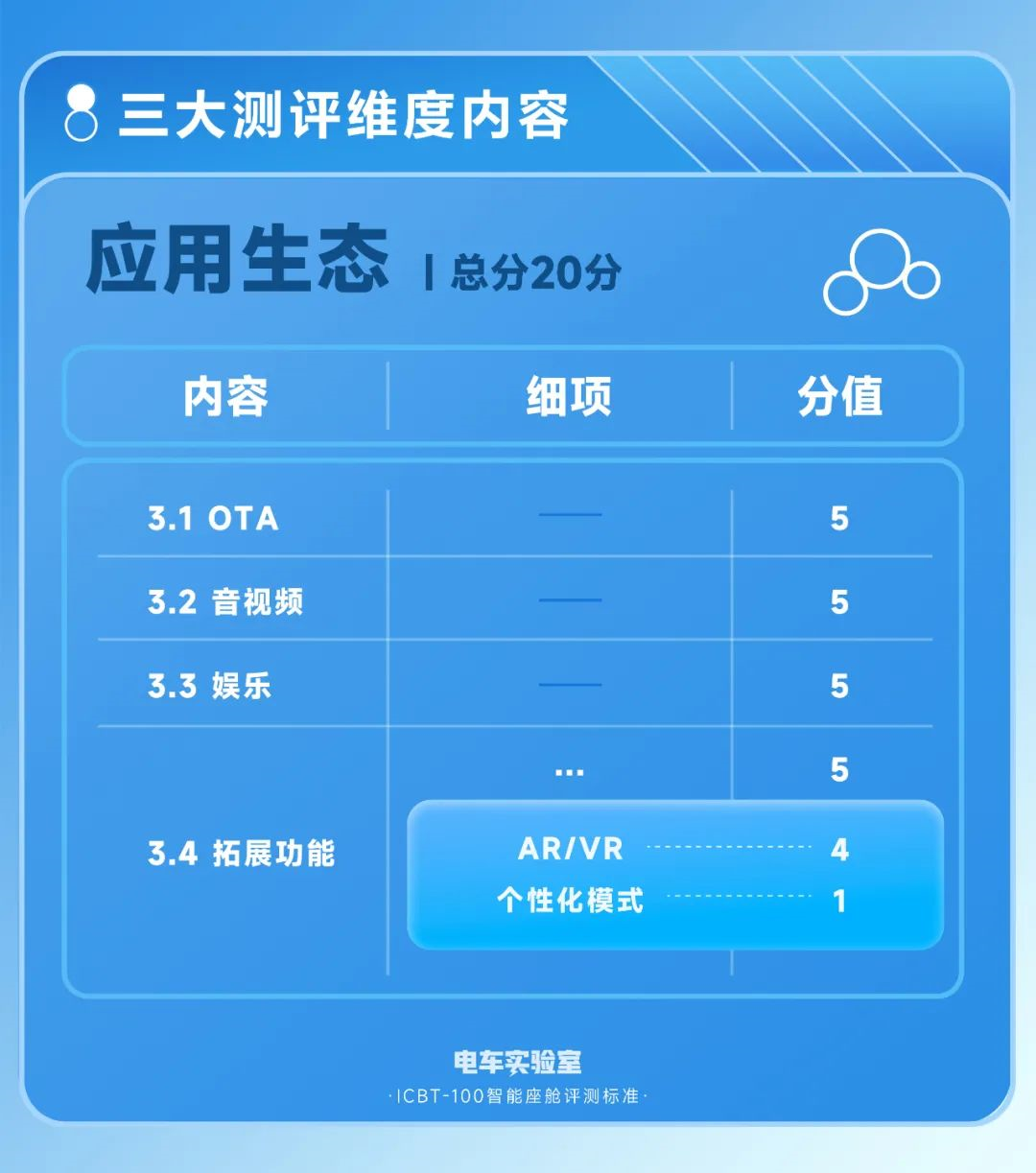
Therefore, in this section, we have set higher requirements for redundant projects based on the existing highest standards of intelligence and our judgment of future industry trends, which mainly include: 1. OTA upgrades, 2. audio and video resources, 3. entertainment and gaming experience, and 4. expansion functions (HUD, personalized modes, etc.). The scoring standard is based on the average level of current intelligent vehicles and is a differentiated advanced requirement of intelligence.
NIO ES6
Regarding application expansion, perhaps due to insufficient hardware capabilities of the ES6, NIO has strictly limited its support and does not currently enable application downloads from the app market. Users can only use the pre-installed QQ Music, Himalaya FM, iQiyi, and Tencent Video, with very limited choice of entertainment apps, which only includes Quanmin K Song and Tidal.
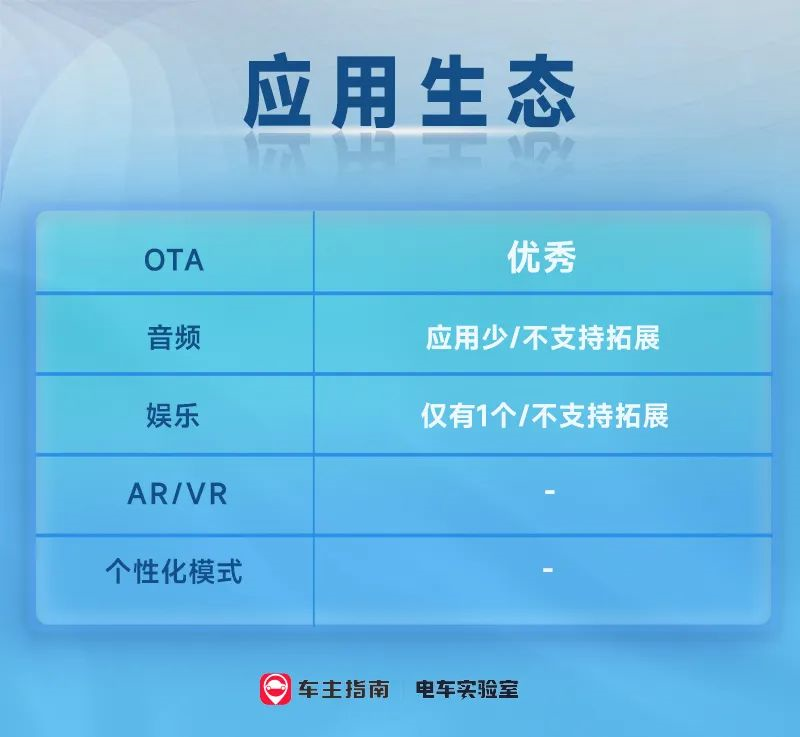
However, the ES6 interface is outstanding for QQ Music, as it has modified the app interface to be more suitable for vertical-screen car infotainment operation, providing a good user experience.
XPeng P7
XPeng is definitely the brand with the richest application expansion, apart from the super-rich app market, it also supports mini-program expansion. The comprehensive number of pre-installed apps is overwhelmingly numerous, including useful apps such as WPS and Dingding, various games, plus all types of audio and video apps, improving the practicality and entertainment experience.
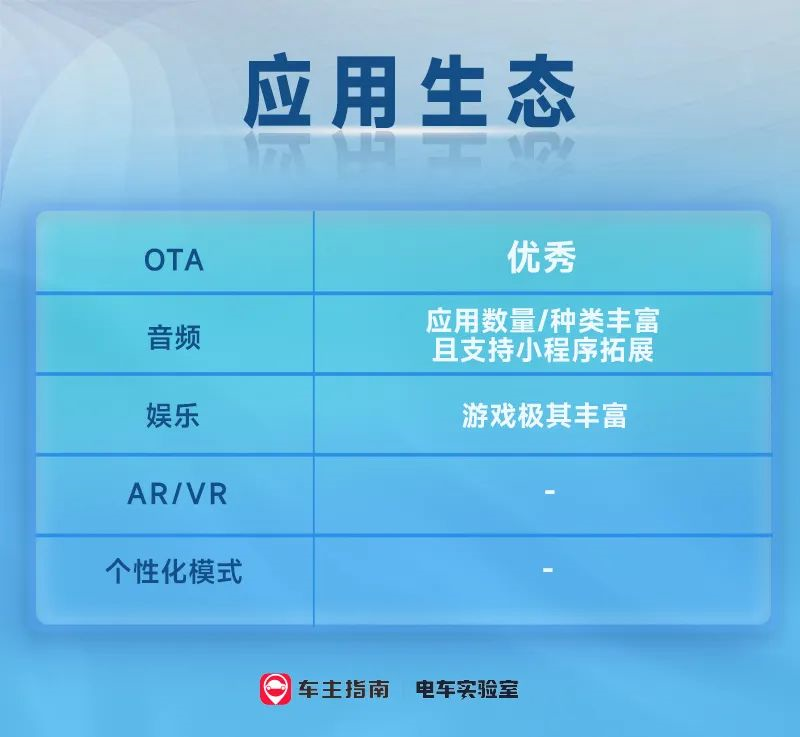
However, the downside is that XPeng P7 has not made any interface modification to most of the apps, such as QQ Music and NetEase Cloud, which still use the car machine-version of the official app.
Li Xiang ONE
Li Xiang ONE’s application ecosystem is at the level between XPeng and NIO. Although the number of third-party apps in its pre-installed app market is only 12, it basically covers all commonly used music and video apps and only one Karaoke app under the entertainment section.
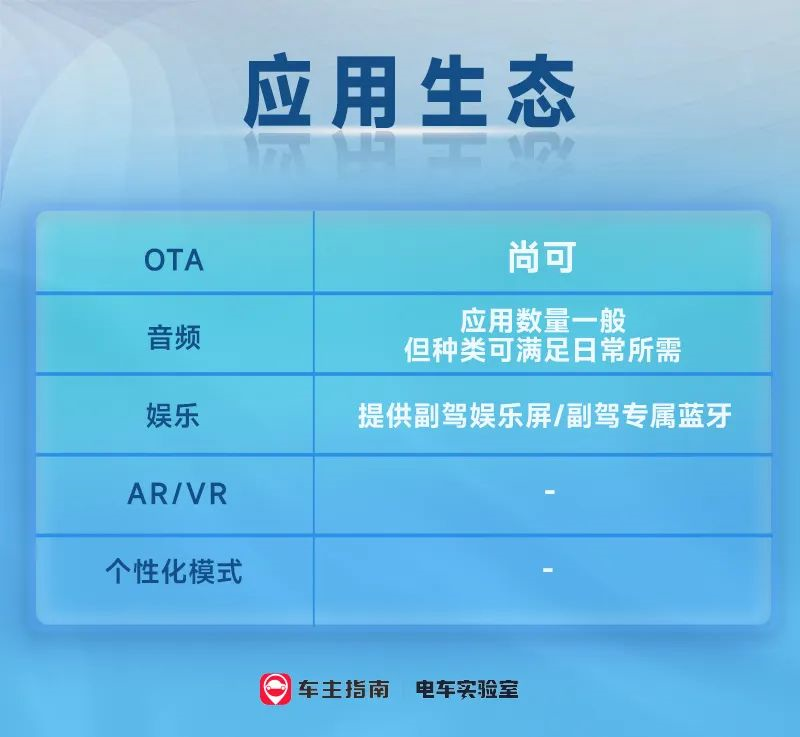 Meanwhile, with a copilot screen installed, most video entertainment apps can only be opened on the copilot screen in the Ideal ONE, while other video apps can be played on the central control screen in P mode; however, they will automatically switch to the copilot screen when shifted to D mode.
Meanwhile, with a copilot screen installed, most video entertainment apps can only be opened on the copilot screen in the Ideal ONE, while other video apps can be played on the central control screen in P mode; however, they will automatically switch to the copilot screen when shifted to D mode.
In terms of interface adaptation, the Ideal ONE is the most well-adapted among the three cars. QQ Music, iQiyi, and others all adopt a card-style layout with the same system UI as well as supporting voice-activated functions like fast-forwarding and rewinding.
Summary of the Application Ecosystem
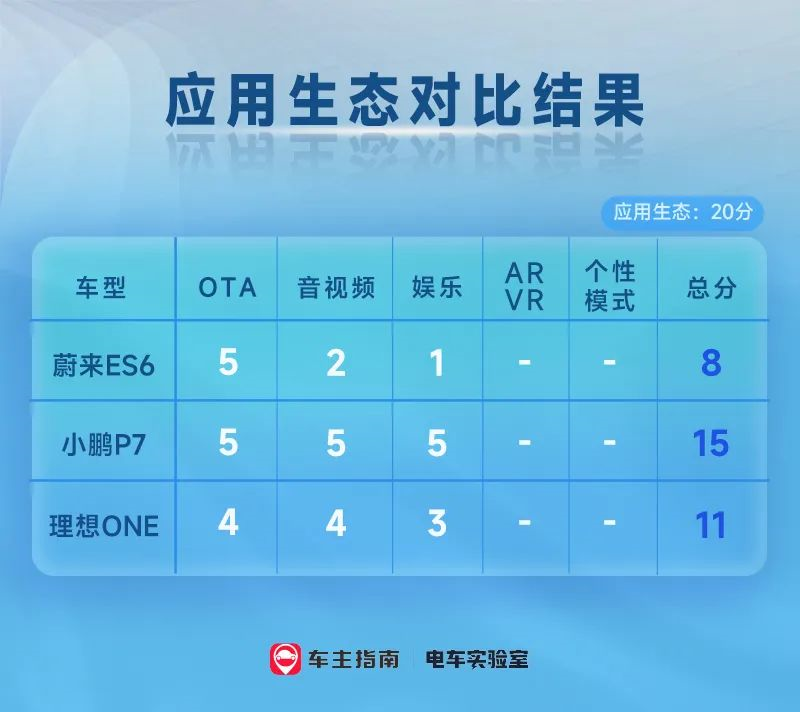
Conclusion
As we all know, with the increasing level of vehicle intelligence, the significant change in intelligent cockpits is from passive interaction (initiated by humans) to active interaction (initiated by humans or machines), and there is an increase in the way content and service are acquired. Therefore, the cockpit system needs to be more active, natural, and emotional to further meet the needs of passengers for cabin information entertainment and work activities.
At the same time, the definition brought about by the rich cabin data is even more complex, and our “Data Intelligence + ICBT-100 Intelligent Cockpit Evaluation Standard” is to explore meaningful and practical intelligent experiences for consumers, and thus meticulously decompose intelligent cockpits to gain a clearer understanding of the strengths and weaknesses of intelligent cockpits of different vehicle models.
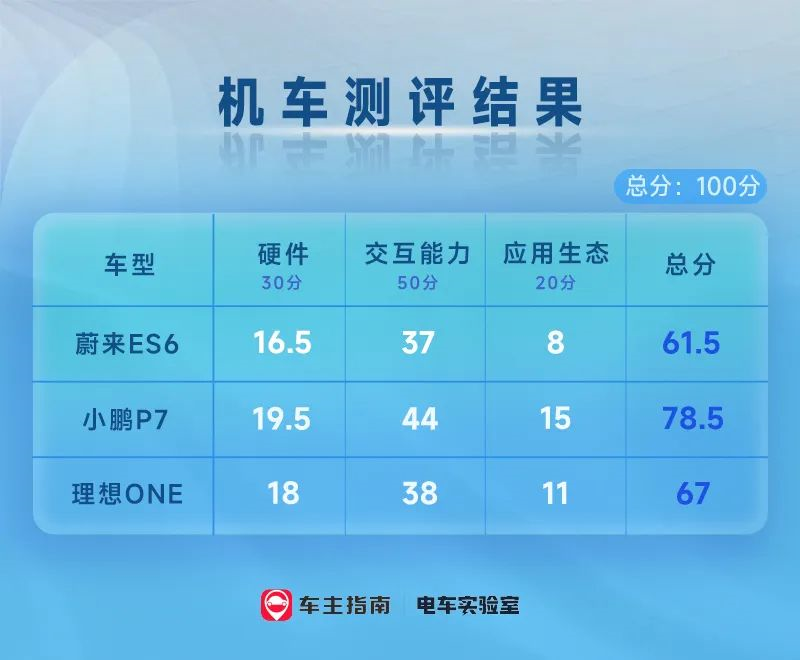
From the results of this evaluation, the XPeng P7, with a score of 78.5, is undoubtedly the “King of the Cockpit”. It has significant advantages in hardware, interaction, and application expansion. However, there is still a lot of room for improvement in screen quality and application UI adaptation!
It is not surprising that the Ideal ONE came in second (68 points), which, like the P7, has excellent hardware materials, not only using an 820A chip but also having an invincible screen quality. Moreover, the system logic is also the best among the three. But if the application responsiveness could be improved, it could be on par with the XPeng P7 in scores.
Although the NIO ES6 (61.5 points) ranks behind the other two in the test, this actual performance is definitely among the top of the list of all vehicle models. After all, NIO’s ability to achieve such a user experience with relatively old hardware is not easy, and the cute NOMI is definitely a plus. (However, it would be great if NIO could open a third-party app market!)
Thank you for reading the first article of the “Data Intelligence + ICBT-100 Intelligent Cockpit Evaluation Standard” focusing on three car models. If you have any ideas about the intelligent cockpits of the three models, please feel free to leave a message below.
This article is a translation by ChatGPT of a Chinese report from 42HOW. If you have any questions about it, please email bd@42how.com.
